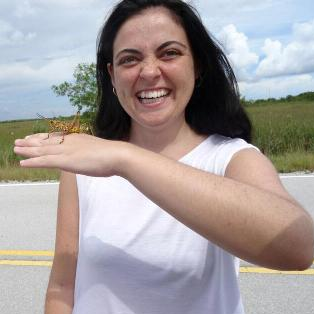RNAi in Insects
A special issue of Insects (ISSN 2075-4450). This special issue belongs to the section "Insect Molecular Biology and Genomics".
Deadline for manuscript submissions: closed (30 June 2023) | Viewed by 8907
Special Issue Editors
Interests: insects; RNA interference; small RNAs (micro RNAs, small interfering RNAs and PIWI-interacting RNAs); systemic RNA interference; RNAi-based pest management; RNAi-based antiviral immunity; small RNA-based transposon control; insect-virus interactions
Interests: insect antiviral immunity; insect virology and immunology; RNA interference
Special Issues, Collections and Topics in MDPI journals
Special Issue Information
Dear Colleagues,
Recent decades have seen great progress in unravelling the mechanisms of RNA interference (RNAi) and small RNAs (sRNAs) in insects and other arthropods. This has been accompanied by a whole range of novel and exciting fundamental questions: 1) What are the molecular players and modes of action of the several RNAi pathways (miRNA, siRNA, piRNA)? 2) From where do the different classes and/or particular sRNA molecules originate? 3) Which physiological processes are mediated by the several sRNA classes and/or specific sRNA molecules? 4) Is RNAi and its sRNA players involved in intercellular, interindividual, interspecies, or even interkingdom communication, and via what mechanisms? In addition, RNAi promises to contribute to novel biotechnological applications—how can it be applied to integrated pest management, to the control of viral infections in vectors or beneficial species, or to the development of research tools, for example? The current Special Issue aims to highlight advances in RNAi and sRNA research in insects and other arthropods. Besides contributing to answer fundamental questions, we also aim to highlight the biotechnological potential of RNAi and sRNA molecules. We invite the submission of original research manuscripts and reviews covering these topics.
Dr. Dulce Santos
Dr. Luc Swevers
Guest Editors
Manuscript Submission Information
Manuscripts should be submitted online at www.mdpi.com by registering and logging in to this website. Once you are registered, click here to go to the submission form. Manuscripts can be submitted until the deadline. All submissions that pass pre-check are peer-reviewed. Accepted papers will be published continuously in the journal (as soon as accepted) and will be listed together on the special issue website. Research articles, review articles as well as short communications are invited. For planned papers, a title and short abstract (about 100 words) can be sent to the Editorial Office for announcement on this website.
Submitted manuscripts should not have been published previously, nor be under consideration for publication elsewhere (except conference proceedings papers). All manuscripts are thoroughly refereed through a single-blind peer-review process. A guide for authors and other relevant information for submission of manuscripts is available on the Instructions for Authors page. Insects is an international peer-reviewed open access monthly journal published by MDPI.
Please visit the Instructions for Authors page before submitting a manuscript. The Article Processing Charge (APC) for publication in this open access journal is 2600 CHF (Swiss Francs). Submitted papers should be well formatted and use good English. Authors may use MDPI's English editing service prior to publication or during author revisions.
Keywords
- small RNAs
- siRNAs
- miRNAs
- piRNAs
- dsRNA
- RNAi
- insects
- arthropods







